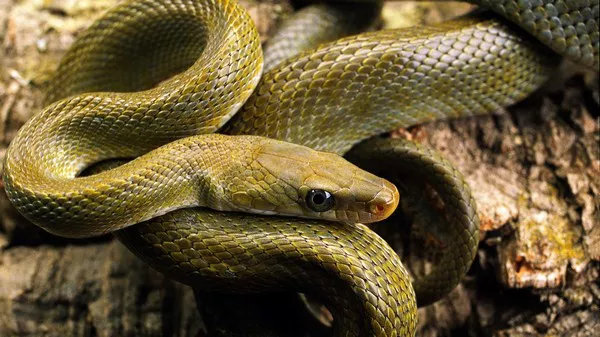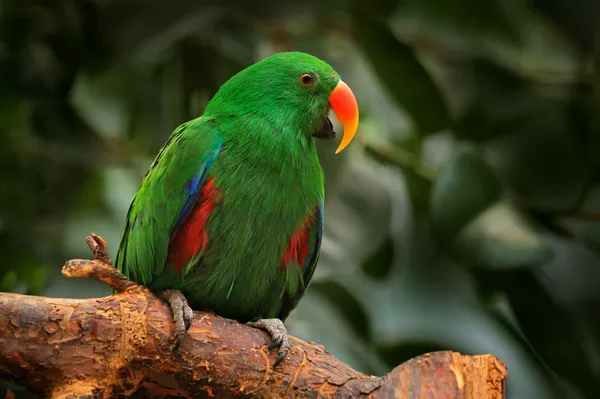Corn snakes (Pantherophis guttatus) are among the most popular pet snakes due to their docile nature, easy care requirements, and beautiful color patterns. Native to North America, these snakes are non-venomous constrictors, often found in the wild in forests, grasslands, and farmlands. While they are generally friendly and easy to handle, there are several important aspects of their behavior that potential and current owners should understand to provide the best care. One question that often arises among new snake owners is whether corn snakes will eat each other. This article delves into the reasons behind such behavior, the factors that influence it, and how to prevent it from occurring in a pet snake setting.
1. Introduction to Corn Snakes
Corn snakes are a type of rat snake, and they are named after the distinctive, corn-like pattern on their scales, particularly on their belly. These snakes are typically orange, brown, or gray with dark brown or black markings running along their backs. As they grow, corn snakes can reach lengths of 4 to 6 feet, making them manageable for pet owners to care for. Corn snakes are primarily solitary creatures in the wild, only coming together during the breeding season.
Their diet consists mainly of small rodents, such as mice, and sometimes birds or eggs. As constrictors, corn snakes kill their prey by wrapping around it and squeezing until the animal suffocates. Their feeding habits and digestive system are specialized to handle a diet of whole prey items, which they swallow whole.
While corn snakes are not naturally inclined to hunt and consume each other, understanding whether they will engage in cannibalism in captivity requires exploring their behavior more closely.
2. The Nature of Corn Snake Behavior
In the wild, corn snakes are solitary animals. They spend most of their time alone, hiding in burrows or tree branches, only interacting with other snakes during mating season. Corn snakes are primarily nocturnal, hunting for food during the night and retreating into their shelters during the day. This solitary nature is important to note when discussing whether corn snakes might eat each other, as cannibalism in snakes generally occurs under specific circumstances, rather than being a regular behavioral trait.
Feeding Behavior of Corn Snakes
Corn snakes are opportunistic feeders. In the wild, they hunt small mammals, birds, lizards, and sometimes amphibians, although rodents are their primary prey. Their hunting methods involve ambush predation, where they lie in wait for an unsuspecting animal to come by before striking. Once they have captured their prey, they use constriction to subdue it and then swallow it whole.
Unlike some snake species that might engage in cannibalistic behavior as a survival tactic, corn snakes are not known for preying on other snakes in their environment. Their feeding instincts are geared toward catching rodents and other small animals, not consuming fellow snakes.
Territorial and Social Behavior
Corn snakes do not display territorial behavior. They do not establish or defend territories and are not particularly social creatures. Even in the wild, if a corn snake encounters another corn snake, it is typically neutral. The snakes may engage in a brief interaction, but fights or prolonged confrontations are rare unless they are competing for a mate during the breeding season. Once the mating season is over, they return to their solitary lifestyles.
The lack of territoriality and social bonds in corn snakes makes the idea of one snake eating another less likely. In contrast, some snake species are more territorial and may engage in cannibalism when faced with competition for resources.
3. Will Corn Snakes Eat Each Other in Captivity?
Despite their solitary nature, the question remains: will corn snakes eat each other in captivity? The simple answer is that while it is not common, it is possible under certain circumstances. There are several factors that may contribute to a corn snake eating another corn snake, and understanding these can help snake owners prevent such incidents.
Stress and Confinement
One of the primary reasons why corn snakes may resort to cannibalism in captivity is stress. Snakes are very sensitive to their environment, and when they feel stressed, it can lead to changes in behavior. Stressors in captivity may include overcrowding, improper cage conditions, and insufficient hiding spots.
If two corn snakes are housed in the same enclosure without adequate space, it could lead to aggression or anxiety. Snakes are solitary by nature, and they generally do not thrive when forced to share an enclosure. If the snakes feel threatened or cornered, one might become aggressive and attack the other, potentially leading to the death and consumption of the other snake.
Additionally, in situations where food is scarce or competition for resources arises, corn snakes might resort to eating a smaller or weaker snake. Although this is not typical for the species, in an unnatural environment where survival instincts take precedence, this behavior can occur.
Inadequate Space and Hiding Places
Corn snakes are nocturnal, secretive creatures that require a secure environment to feel safe. In the wild, they use tree hollows, burrows, and rock crevices to hide during the day. In captivity, providing them with a large enough enclosure with plenty of hiding spots is essential to ensuring they feel secure.
If two corn snakes are housed in a small enclosure with limited hiding spaces, they may become stressed and agitated. Without enough space to establish their own territories or find places to hide, they may start exhibiting aggressive behavior toward each other. This could lead to biting, striking, or even one snake attempting to eat the other. Furthermore, an overcrowded habitat can exacerbate stress and cause long-term health problems for both snakes, making it more likely that cannibalistic behavior will occur.
Mating Behavior
During the breeding season, corn snakes may become more aggressive and competitive, especially when there is a lack of food or other resources. Males, in particular, may become more assertive, often engaging in combat with other males for the opportunity to mate with a female. While it is rare, if the competition becomes too intense or one of the snakes is injured, the situation may escalate into cannibalism.
However, such incidents are typically limited to mating season. Afterward, the snakes return to their solitary lifestyles, and the likelihood of cannibalism diminishes significantly. To avoid stress and aggression during breeding, it is essential to separate male and female snakes unless breeding is being actively planned under controlled conditions.
Feeding Time and Aggression
Sometimes, corn snakes may exhibit aggression around feeding time, particularly if they are housed together. If two snakes are hungry and there is a shortage of food or a perceived competition for resources, one snake may attempt to eat the other. This can happen if the snakes are too closely housed or if there are food-related stressors.
It’s important to note that a corn snake’s natural instincts are focused on catching and consuming prey. If a snake views another smaller snake as potential food, it may try to strike and constrict it, even if it isn’t a typical prey item. Feeding corn snakes separately in their own enclosures helps prevent this behavior and ensures they have enough food to meet their nutritional needs.
The Size Difference Between Snakes
Cannibalism in snakes is more likely to occur if there is a significant size difference between the snakes. If one snake is much smaller or weaker than the other, it may be seen as easy prey. Corn snakes, while generally non-aggressive toward each other, may exhibit predatory behavior if they sense an opportunity to feed on a smaller or injured snake.
In a captive environment, it is essential to ensure that both snakes are of similar size and health to prevent such incidents. If a larger, stronger snake is housed with a smaller one, it is best to separate them before any aggression or predatory behavior can occur.
4. How to Prevent Corn Snakes from Eating Each Other
To minimize the risk of cannibalism, there are several precautions that can be taken to ensure a safe and healthy environment for your corn snakes.
Provide Adequate Space
Corn snakes need ample space to roam, hide, and explore. It’s crucial to provide an enclosure that allows each snake to establish its own territory. A general rule is to provide at least a 20-gallon tank for one snake, with the size increasing by 10 gallons for each additional snake. Make sure the enclosure is tall enough to allow for climbing and that it has plenty of hiding spots to help the snakes feel secure.
Separate Snakes During Feeding
To prevent food-related aggression, it’s best to feed your corn snakes separately. This not only ensures they are getting enough food but also reduces the likelihood of them becoming aggressive toward one another around feeding time. Feeding snakes in separate enclosures will also help you monitor how much each snake is eating, which is important for their health.
Monitor Their Behavior
Keep an eye on the interactions between your corn snakes. If you notice any signs of aggression, such as hissing, biting, or posturing, it may be a sign that they are not getting along and should be separated. Regularly check the health and behavior of both snakes to ensure they are not showing signs of stress or injury.
Ensure Proper Environmental Conditions
A well-maintained enclosure with the right temperature, humidity, and hiding spots is crucial for keeping your corn snakes calm and healthy. Corn snakes thrive in temperatures between 75 and 85°F (24-29°C) with a humidity level of around 40-60%. Providing a comfortable environment will reduce stress and make it less likely that the snakes will engage in harmful behavior.
Conclusion
While corn snakes are generally not inclined to eat each other, there are certain circumstances where cannibalism may occur in captivity. These include stress, overcrowding, food scarcity, and aggression during the mating season. By providing a proper enclosure, separate feeding areas, and ensuring each snake has its own space and hiding spots, you can significantly reduce the risk of cannibalism.
Understanding the nature of corn snakes, their behaviors, and their specific care needs is key to providing a safe and healthy environment for them. By respecting their solitary and secretive nature, pet owners can enjoy the company of these beautiful and fascinating creatures without worrying about the possibility of them eating each other.
Related Topics:























